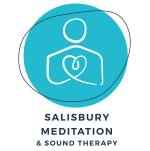You feel it coming on hours before the pain starts, another migraine headache. Migraine attacks have varying symptoms ranging from visual disturbances to nausea, vomiting, and throbbing pain. But what helps migraines? Beyond the usual recommendations such as exercise, hydration, medication, and eating a balanced diet, many exciting new treatments are being researched and tested. Sound healing is the latest to show promise!

Sound has a profound impact on our central nervous systems. Soothing sounds, such as those created by the Tibetan Singing Bowls in our sound baths can instantly calm and lift your mood whereas abrasive or loud sounds can make you jump or flinch.
Research suggests that conditions such as insomnia, depression, chronic back pain, and chronic migraines all respond positively to this form of therapy.
Sound in Healing
While this technique may be new in the medical treatment of migraines, the use of sound in healing practices has been around since ancient civilizations. Drumming and chanting are two such examples of sound healing methods that have been used for generations. But how does sound impact chronic pain conditions such as a migraine?
Soothing vibrations and pleasant sounds have a profound impact on brain waves. When you’re awake and actively thinking, your brain is in the beta state. When your body is deeply relaxed, it can enter the theta, alpha, and delta states. Additionally, as you reach deeper states of relaxation through sound, your dopamine levels rise. Dopamine is an important neurotransmitter that helps your body regulate pain. It also increases feelings of happiness.
This form of therapy is natural and can be done in the comfort of your own home. There are many apps and videos on YouTube specifically designed to help with migraine relief.

Types of This Brain Wave Therapy?
There are several different types of sound techniques that can aid in pain relief and relaxation. At the most basic level, white noise can be a helpful option. White noise is essentially background noise. So, while the white noise in your office or on the street will probably increase your stress levels, soothing noise such as the sound of a fan or the sound of rain can help distract you from the pain you’re experiencing.
Melodic music is another helpful option. Soothing piano or new age sounds played while you’re laying down in a dark room can help you reach those delta waves for the deepest level of relaxation.
Binaural tones are probably the most intriguing technique used in this form of healing. Binaural tones send different frequencies to each ear. Together, they create one low pulse that aids in relaxation decreased anxiety, and desensitized response to pain. Binaural tones have a meditative quality and are easily accessible online or in many apps.
Those who listen for 15-30 minutes a day report decreased symptoms. However, it is important to note that you must use headphones and not a stereo or speaker. Because each ear is supposed to receive beats at a different frequency, you will not get the same effect if you listen without headphones.

How Can Sound Therapy Help Migraines?
It may seem as though the sound is the last thing you want to experience when you’re suffering from an excruciating migraine. However, getting to a relaxed state is one of the most helpful methods of reducing the pain experienced during one of these debilitating headaches. This is why going to sleep can be so therapeutic when you have a headache. Without the tension in your body, the migraine eventually ends.
Because soothing sounds help you to relax, setting up your own sound healing practice will help you manage your headaches. First, determine the kind of sound therapy that is best for you. Turn on the fan in your room or download an app that plays gentle water sounds if you want to try white noise. Switch to the classical music station if you prefer to listen to melodic music. If you experiment with binaural tones, invest in a good pair of earbuds that won’t bother your ears during your sound session.
Darken the room, close your eyes, and focus on your breathing and the music. Set a timer for the duration of your session and just rest. By allowing your body to be taken over by the sound of soothing music, your brain will eventually enter higher levels of relaxation and hopefully reach the theta or delta level of brainwaves. This, in turn, will increase your dopamine levels so that you generate feelings of euphoria and the focus on the pain lessens. By engaging in a regular practice, you can reduce the frequency of your headaches.

While research on the effectiveness of sound baths for headaches and migraines is ongoing, many individuals find sound therapy provides relief and relaxation, which can be beneficial in managing these conditions. Nevertheless, new research on the effects of sound for chronic pain is showing promising, natural results.
Sound baths offer a calming and immersive experience that may help reduce stress, a known trigger for headaches and migraines. The soothing sounds and vibrations can promote relaxation and improve sleep quality, both of which can contribute to managing headaches.
Many clients experiencing headaches and migraines have shared positive feedback about their sound bath sessions. They report feeling calmer, more relaxed, and experiencing reduced pain intensity after their session.
Sound baths offer a safe and non-invasive approach to managing headaches and migraines. While results may vary, we encourage you to experience the potential benefits for yourself. And as with any issue, getting informed about the biology of your headaches will bring you one step closer to their effective management.

References: https://


Recent Comments